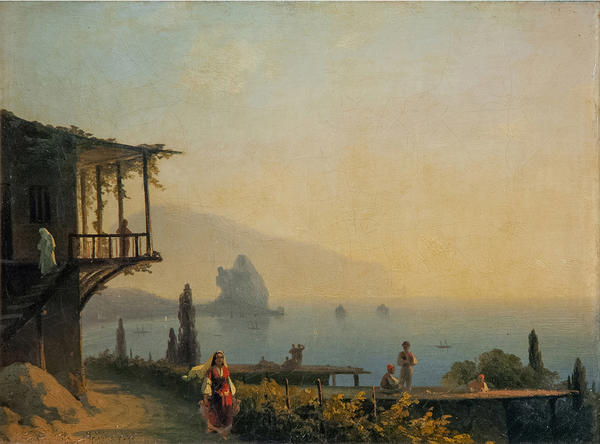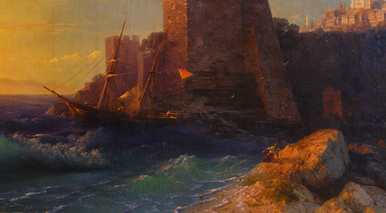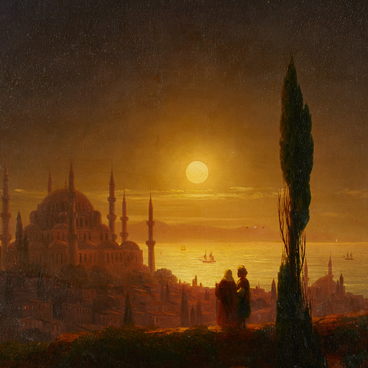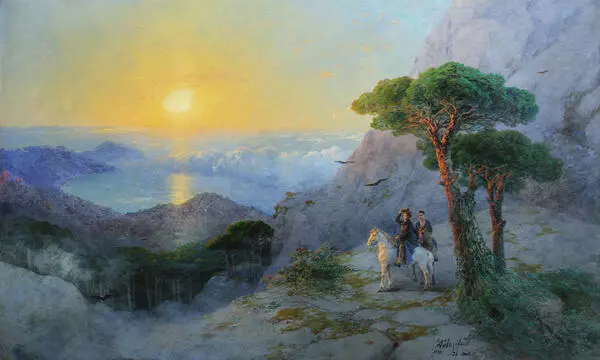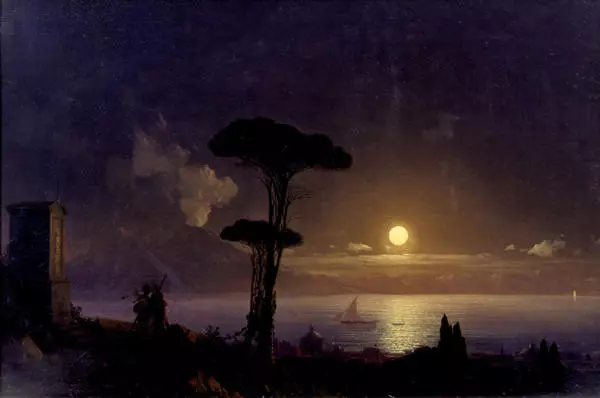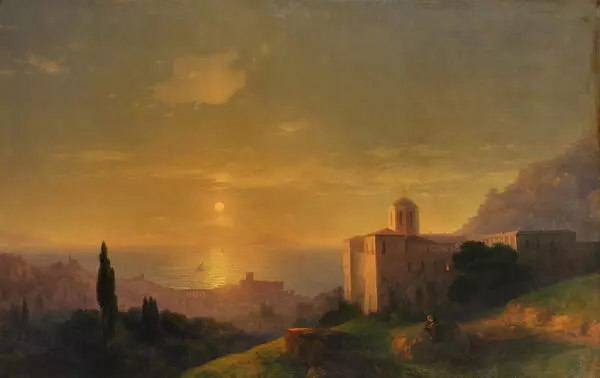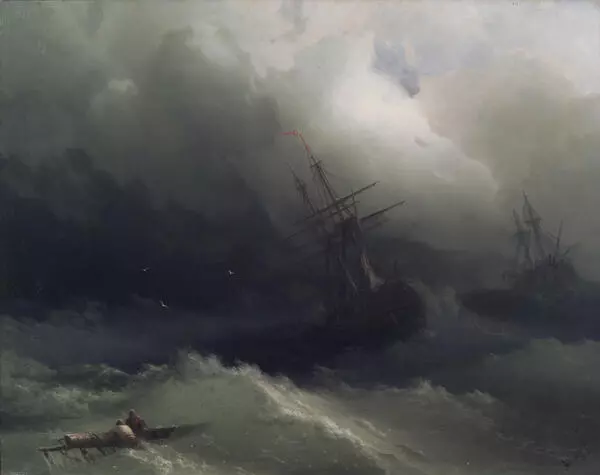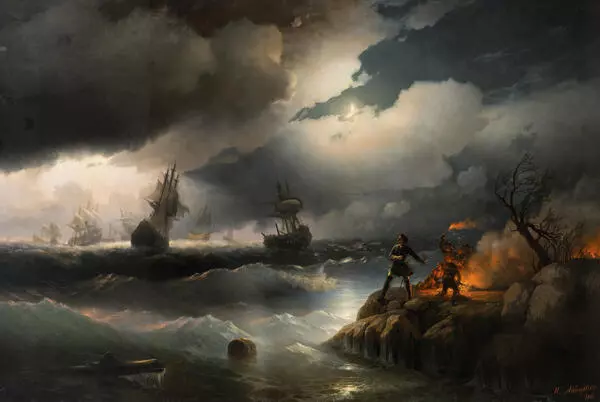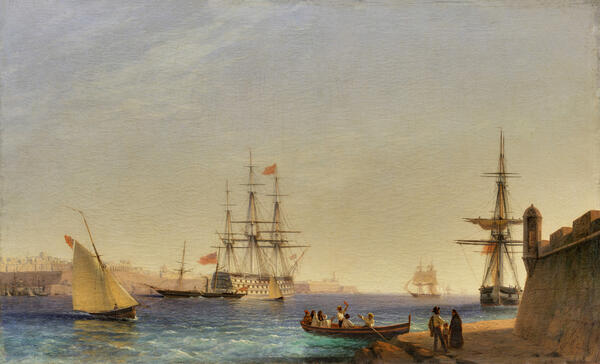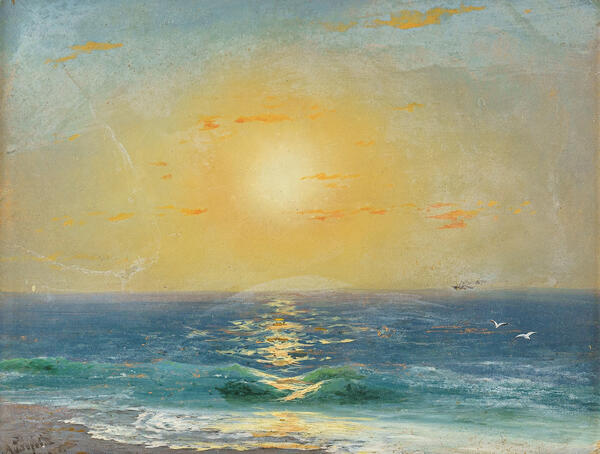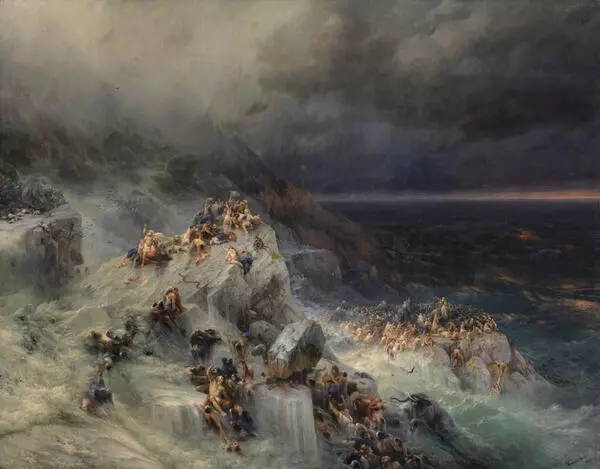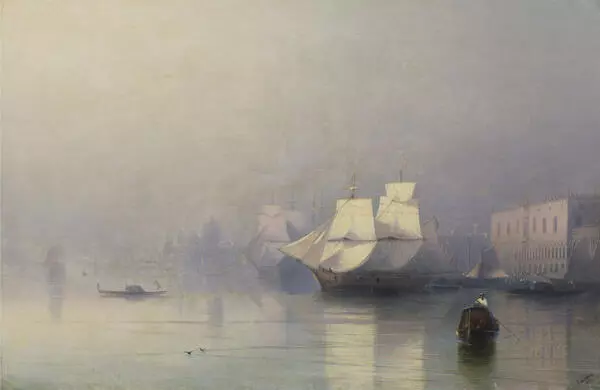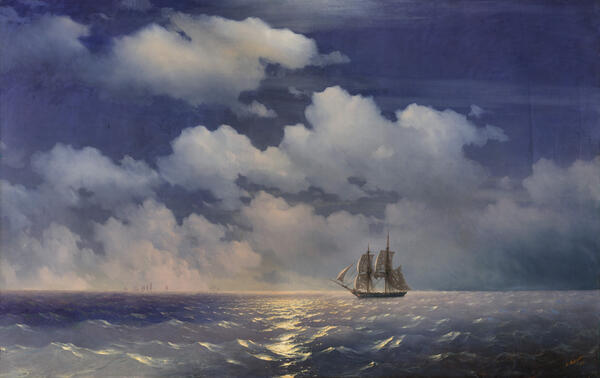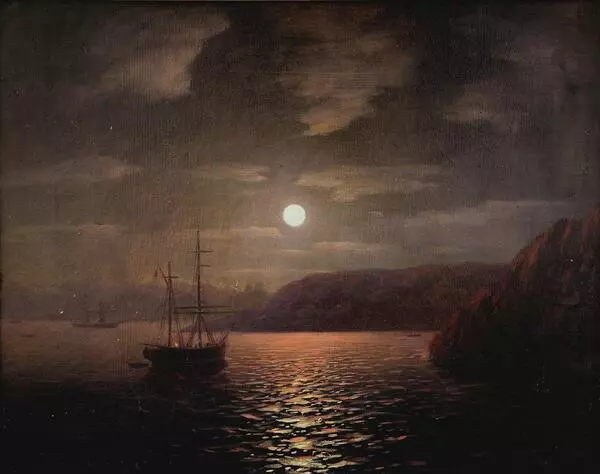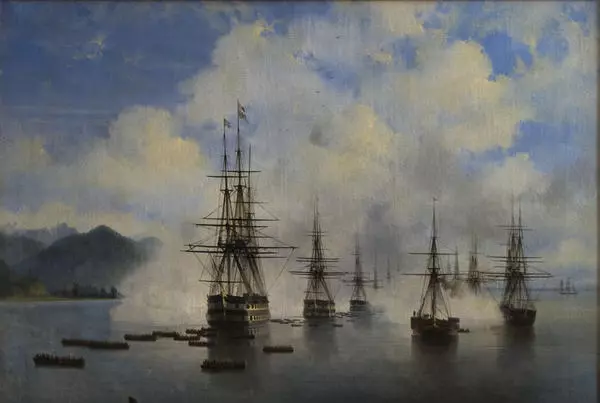In the autumn of 1840, Ivan Aivazovsky finished a fast-track course in the Academy of Arts and left abroad to improve his skills. He had a chance to work in Rome and Naples, organise exhibitions in Paris, London and Amsterdam. Very soon the young man rose to European fame. In 1843, when the picture Gurzuf. A House with a Terrace was painted, a gold medal at the Paris Exhibition was conferred on Aivazovsky. The Italian press also praised the young artist. Four years spent abroad turned him into a fully formed artists and one of the most popular seascape painters in Europe.
By late 1843, Aivazovsky had painted over fifty pictures, most of which were left abroad. Those pictures show the painter’s swift creative growth. Aivazovsky painted his picture Gurzuf. A House with a Terrace from memory. The artist must have been homesick and kept turning to familiar places in the Crimea, which enchanted him as a teenager. The scholars of Aivazovsky’s creative work point to details of his favourite Crimean scenes seen in his pictures painted abroad. Even portraying the Italian coast or Turkish shoreline, the painter imparted them with features of Feodosia and Gurzuf.
Gurzuf was Aivazovsky’s landmark location. That small settlement was berhymed by Alexander Pushkin in one of his poems (“A magic place, my joy to see it! Its hills and woods are full of life…”). More than once Aivazovsky visited the house of Duke de Richelieu, a founder of Odessa, where the poet used to live, and the artist imagined Pushkin watching the same scenery. “Waking up at night I loved to listen to the sound of the sea and did that for hours on end. Within a few steps from the house, there was a young cypress tree; every morning I came to see it and became attached to it with a friendly feeling of sorts”, — remembered the painter.
The picture Gurzuf is distinguished by its thoroughly painted foreground with a terrace and figures. For that work Aivazovsky chose an intense palette rich in shades and reminiscent of warm southern evenings. This is a tender and poetic work. It is devoid of the impact of old-time painters’ art, which he studied in Europe, but at the same time there are features of the romantic tenor he was fond of in his adolescence.
By late 1843, Aivazovsky had painted over fifty pictures, most of which were left abroad. Those pictures show the painter’s swift creative growth. Aivazovsky painted his picture Gurzuf. A House with a Terrace from memory. The artist must have been homesick and kept turning to familiar places in the Crimea, which enchanted him as a teenager. The scholars of Aivazovsky’s creative work point to details of his favourite Crimean scenes seen in his pictures painted abroad. Even portraying the Italian coast or Turkish shoreline, the painter imparted them with features of Feodosia and Gurzuf.
Gurzuf was Aivazovsky’s landmark location. That small settlement was berhymed by Alexander Pushkin in one of his poems (“A magic place, my joy to see it! Its hills and woods are full of life…”). More than once Aivazovsky visited the house of Duke de Richelieu, a founder of Odessa, where the poet used to live, and the artist imagined Pushkin watching the same scenery. “Waking up at night I loved to listen to the sound of the sea and did that for hours on end. Within a few steps from the house, there was a young cypress tree; every morning I came to see it and became attached to it with a friendly feeling of sorts”, — remembered the painter.
The picture Gurzuf is distinguished by its thoroughly painted foreground with a terrace and figures. For that work Aivazovsky chose an intense palette rich in shades and reminiscent of warm southern evenings. This is a tender and poetic work. It is devoid of the impact of old-time painters’ art, which he studied in Europe, but at the same time there are features of the romantic tenor he was fond of in his adolescence.

